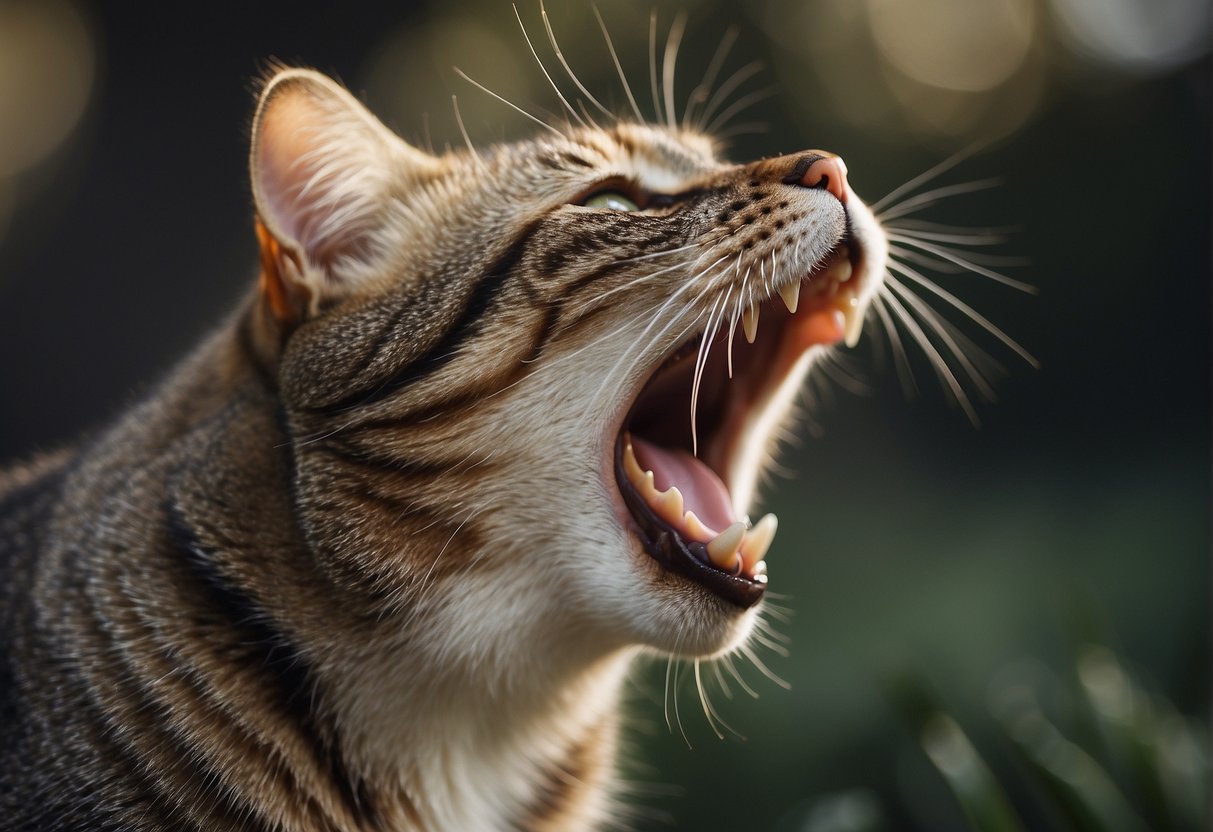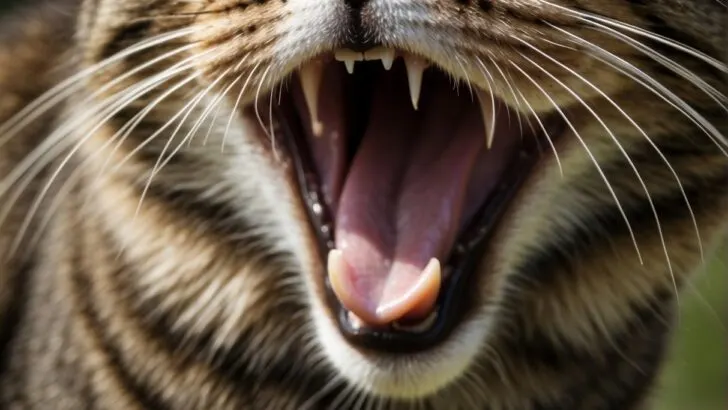Cat tongues are rough due to the presence of tiny, hook-like structures known as papillae, which are made of keratin, the same material as human fingernails. If you’ve ever been licked by a cat, you might’ve noticed a texture similar to sandpaper.
This isn’t just a peculiar trait; it serves several important functions for our feline friends. The roughness of their tongue helps cats to clean their fur and remove loose hair, much like a built-in comb. It also assists them in scraping meat off bones, which is particularly useful given their carnivorous diet.

Beyond grooming and dining, the unique texture of a cat’s tongue plays a role in their hydration. When cats drink, they rapidly flick their tongues to create a column of water, which they then swiftly close their mouth around.
This technique is quite efficient, ensuring they get every precious drop. So, when you see your cat meticulously grooming after a meal or lapping up water, their remarkable tongue is to thank for keeping them well-groomed and quenched.
Anatomy of the Cat’s Tongue
The cat’s tongue is uniquely designed to serve multiple functions, such as grooming and food consumption. Its roughness is largely due to specialized structures called papillae, which are covered in keratin.

Structure of Papillae
Your cat’s tongue is covered with hundreds of tiny spines known as filiform papillae. These are not just any spines; they’re shaped like backward-facing barbs. This design is particularly efficient for certain grooming tasks like detangling fur and removing dirt. During grooming, the papillae act like a comb, passing through your cat’s fur with each lick.
- Key Functions of Papillae:
- Grooming: Detangle and clean the coat.
- Feeding: Help strip flesh from bones.
Keratin and Texture
Keratin, the protein that makes up human hair and nails, is also what the papillae on your cat’s tongue are made of. This lends them the durability to withstand constant grooming and the rigors of their carnivorous diet.
The texture of keratin gives the papillae and, by extension, the tongue, its characteristic roughness—a bit like sandpaper, you might say. It’s this texture that aids in the grooming process, allowing the barbed tongues to pick up loose fur and debris from the coat.
- Composition of Papillae:
- Material: Keratin (same as human hair and nails).
- Texture: Rough, sandpaper-like.
Functions and Benefits
The rough tongue of a cat is far more than a peculiar trait; it’s a vital tool for their daily life. Let’s explore how this rough surface supports their grooming habits and dietary needs.
Grooming and Cleaning
Your cat’s tongue is a marvel when it comes to grooming and cleaning. Barbed papillae—tiny, backward-facing hooks on the tongue—act like a natural comb. These hooks are essential in achieving several grooming tasks:
- Detangle Fur: They work through their fur to remove knots and tangles.
- Remove Loose Hair and Debris: As they lick, they effectively collect loose hair and any debris stuck in their coat.
- Skin Health: Their tongue distributes saliva over the skin and fur, which not only cleans but also helps regulate body temperature and maintain healthy skin.
Feeding and Eating Habits
Regarding their diet, your cat’s rough tongue plays a crucial role in feeding and eating habits:
- Meat Processing: Cats use their tongue to scrape meat off bones, reflecting their natural predatory instincts.
- Water Intake: The grooves on their tongue help them lap up water efficiently.
- Taste and Texture: While cats don’t perceive flavors like humans, the taste buds on their rough tongue can sense the texture and taste of their food, helping them decide what’s palatable.
Comparative Perspective
When you’re petting your feline friend, you might have noticed its unique tongue texture. The rough surface is actually quite different from other animals and plays a key role in their survival.
Cats vs. Other Animals
Cats: Your domestic cat’s tongue is covered with tiny, backward-facing hooks called papillae. These are made of keratin – the same material that your nails are made from.
Dogs: Unlike cats, dogs have smoother tongues. While a dog’s tongue is primarily used for eating and lapping up water, it’s not as effective as a cat’s for grooming.
Big Cats: Lions, tigers, and other big cats also have rough tongues. It’s a trait shared across the feline family, aiding these powerful predators with grooming and feeding.
Birds: Birds’ tongues are generally smooth and often designed for specific feeding habits, which is quite different from the multifunctional feline tongue.
- Domestic Cats vs. Other Animals
- Dogs: Smooth tongues used for eating and drinking
- Big Cats: Rough tongues like domestic cats
- Birds: Smooth, specialized tongues for feeding
Evolutionary Significance
Cats, both big and small, are obligate carnivores. This means they depend on meat to fulfill their dietary needs and the rough texture of their tongues plays a significant role in this.
Evolution: Over time, cats evolved to become efficient predators. The keratinized papillae on their tongues aid in stripping flesh from bones and are a result of this evolutionary process.
Genetic Mutation: The presence of a rough tongue isn’t due to a genetic mutation but rather an adaptation. It is a beneficial trait that has been passed down and preserved among feline species.
- Evolutionary Traits in Cats
- Strike and hold prey
- Groom to reduce scent and maintain temperature regulation
- Consume meat more effectively

My name is James, and welcome to FAQCats!
Along with our team of cat owners, expert pet enthusiasts, and pet professionals, we aim to write engaging helpful, engaging content about cats. At FAQCats we strive to provide content that’s accurate and fun to read. Our team writes about everything related to cats; even the most complex of topics. Through extensive research and caring for our own fur-pals, we’re able to provide something cat owners worldwide will love. Have a look around, and leave us feedback anytime!

